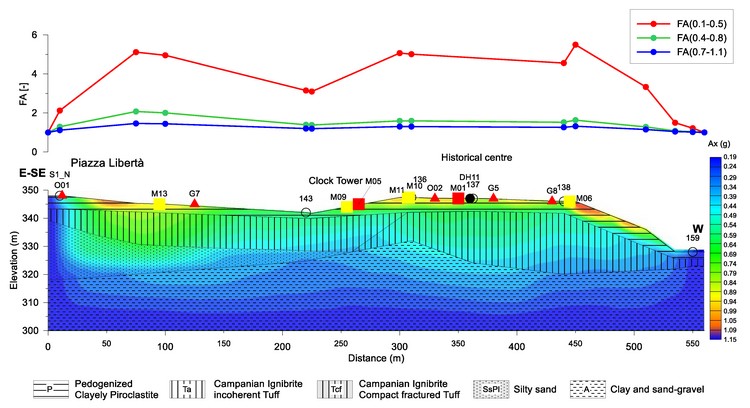
Nardone, L.; Gizzi, F.T.; Maresca, R. Ground Response and Historical Buildings in Avellino (Campania, Southern Italy): Clues from a Retrospective View Concerning the 1980 Irpinia-Basilicata Earthquake. Geosciences 2020, 10(12), 503; Geosciences | Free Full-Text | Ground Response and Historical Buildings in Avellino (Campania, Southern Italy): Clues from a Retrospective View Concerning the 1980 Irpinia-Basilicata Earthquake
Published: 18 December 2020
Abstract
Cultural heritage represents our legacy with the past and our identity. However, to assure heritage can be passed on to future generations, it is required to put into the field knowledge as well as preventive and safeguard actions, especially for heritage located in seismic hazard-prone areas. With this in mind, the article deals with the analysis of ground response in the Avellino town (Campania, Southern Italy) and its correlation with the effects caused by the 23rd November 1980 Irpinia earthquake on the historical buildings. The aim is to get some clues about the earthquake damage cause-effect relationship. To estimate the ground motion response for Avellino, where strong-motion recordings are not available, we made use of the seismic hazard disaggregation. Then, we made extensive use of borehole data to build the lithological model so being able to assess the seismic ground response. Overall, results indicate that the complex subsoil layers influence the ground motion, particularly in the lowest period (0.1–0.5 s). The comparison with the observed damage of the selected historical buildings and the maximum acceleration expected indicates that the damage distribution cannot be explained by the surface geology effects alone.
KEYWORDS:
ground response; 2D numerical analysis; soil-structure effects; cultural heritage
This is an Open Access article distributed under the terms of the Creative Commons Attribution License (http://creativecommons.org/licenses/by/4.0/), which permits unrestricted use, distribution, and reproduction in any medium, provided the original work is properly cited.